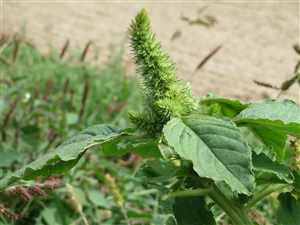Amaranth (Amaranthus retroflexus)
Main Facts about Amaranth

Using Amaranth
The grain has 12 to 17% protein, and is high in lysine, an essential amino acid in which cereal crops are low. The grain is high in fiber and low in saturated fats. Recent studies have linked amaranth to reduction in cholesterol in laboratory animals. More iron, calcium, protein, manganese, fiber than weat or rice. Gluten free. Especially digestible. Good for your heart. Suitable for those with celiac disease, recovering from illness or transitioning from a fast or cleanse. Used for diarrhea, gastroenteritis, excessive menstruation.Caution!
Do not consume if pregnant or breastfeeding.Cooking with Amaranth
Amaranth can be eaten raw or steamed. Whole plant is edible. Flour can be put into smoothies etc. Seeds better if soaked overnight. Roots can be roasted or boiled as potato alternative. Amaranth can be simmered like other grains and has a porridge-like texture. It can be combined with other grains if you desire a more "rice-like" dish. It can also be popped in a skillet like popcorn, which gives it a nutty flavor and crunchy texture.How to grow Amaranth
Seeds are very small, so it is important to have a fine, firm seedbed. Seeds should be planted no more than 1/2 inch deep. Heavy textured soils should be avoided. The crop is usually sown in late May or early June when the soil temperature is at least 65°F.Amaranth Toxic Look-alikes
Hairy Nightshade, whose leaves look the same but stem is hairy and has white nightshade flower.| Aloe |
Angelica
|